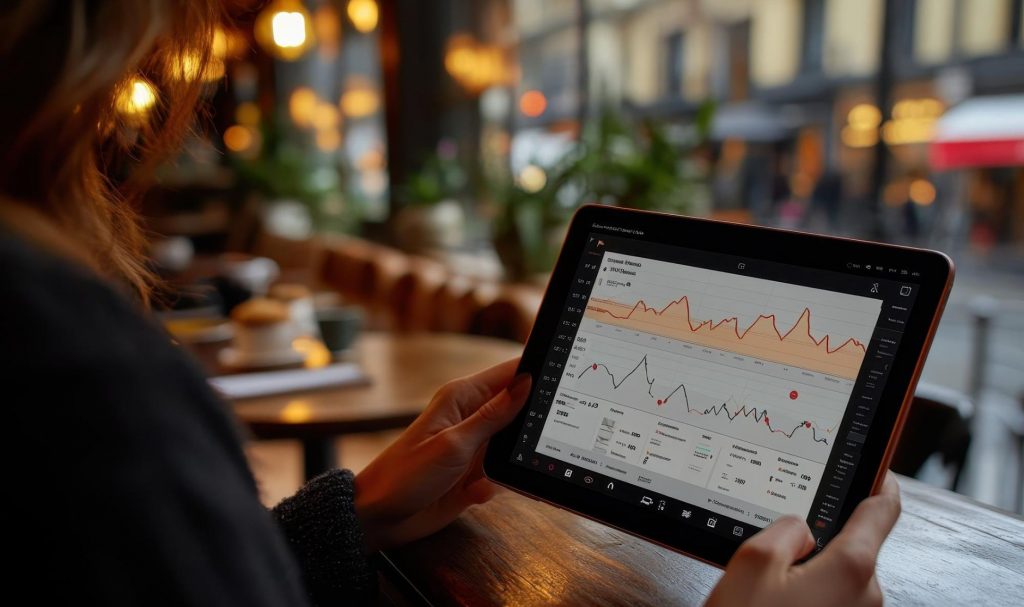Influencer Analytics: A Deep Dive Into Instagram Influencer Metrics
5 Mins Read
Published on: 16 November 2023
Last Updated on: 20 January 2025

toc impalement
The social media landscape, especially on Instagram, has evolved into a vibrant marketplace where influencers wield significant power and impact. Analyzing Instagram influencers has become a crucial aspect of modern marketing strategies.
This process involves delving into various metrics to determine an influencer’s content’s reach, engagement, and overall effectiveness. In this article, we’ll take a comprehensive journey into influencer analytics, exploring the various metrics used to gauge the performance and impact of Instagram influencers.
Understanding Influencer Analytics
Influencer analytics is an important tool that can really help you understand the overall reach of your influencer campaign. Therefore, it is often used by companies to understand.
Here are some of the fundamentals of influencer analytics that you need to understand today!
Understanding The Basics

Influencer analytics refers to the systematic analysis of data to evaluate the impact and effectiveness of an influencer’s content. This involves assessing various metrics on Instagram to gain insights into an influencer’s reach, engagement rates, and ability to drive actions or conversions among their followers.
Influencer analytics offers a comprehensive view of an influencer’s impact and effectiveness. By analyzing various metrics, marketers can make informed decisions about collaboration with influencers and optimize the performance of their marketing campaigns. As influencer marketing continues to evolve, influencer analytics will play an increasingly important role in shaping the future of influencer-brand collaborations by providing deeper insights and predictive capabilities.
Follower Count And Growth
Follower count is often the first metric to consider when analyzing an influencer’s impact. However, more than just the number, the growth rate of an influencer’s followers provides valuable information. A steady and organic increase in followers signals sustained interest and relevance in an influencer’s content.
Engagement Metrics: Likes, Comments, And Shares.
Engagement metrics are essential for understanding an influencer’s true impact on their audience. The number of likes, comments, and shares on an influencer’s posts reflects the level of interest their content generates. It demonstrates the depth of connection and active participation within the community. High engagement rates indicate that the influencer’s content resonates with their followers and encourages meaningful interactions.
When an influencer’s posts receive numerous likes, it shows that their audience appreciates and acknowledges the content. Likes are a quick and easy way for followers to show their support and approval. Conversely, comments allow followers to engage in a dialogue with the influencer, sharing their thoughts and opinions and even asking questions. The more comments an influencer’s posts receive, the more involved and invested their audience is in the content.
Shares are another vital engagement metric as followers find the influencer’s content valuable enough to share with their networks. When an influencer’s posts are shared, they have the potential to reach a wider audience, increasing the influencer’s visibility and impact. This helps the influencer gain more followers and allows them to spread their message and influence a broader community.
Furthermore, high engagement rates demonstrate that an influencer’s content resonates with their audience on a deeper level. It shows that the influencer has cultivated a sense of community and connection, where followers feel compelled to actively participate and engage with the content. This level of engagement is invaluable for brands looking to collaborate with influencers as it indicates a highly receptive and engaged audience.
Audience Demographics And Geographic Insights

Understanding an influencer’s audience demographics is crucial for targeted marketing efforts. Metrics revealing the age groups, gender distribution, geographic locations, and even interests of an influencer’s followers are valuable in determining alignment with a brand’s target audience.
Reach And Impressions
Reach signifies the number of unique users who have viewed an influencer’s content, while impressions denote the number of times the content was displayed. These metrics indicate the overall exposure and potential impact an influencer’s content can have within and beyond their immediate follower base.
Click-Through Rate (Ctr) And Conversion Metrics.
The CTR is a vital metric for campaigns focused on driving traffic or conversions. It measures the percentage of users who click on a provided link within an influencer’s content. Conversion metrics provide data on actions users take after interacting with an influencer’s content, whether signing up, purchasing, or visiting a website.
Sentiment Analysis
Sentiment analysis evaluates the overall tone and sentiment of comments and interactions on an influencer’s content. This qualitative metric provides insight into how the audience perceives the influencer’s content and whether it resonates positively or negatively.
Authenticity Assessment

Authenticity is paramount in influencer marketing. An authentic influencer fosters genuine connections with their audience. Influencer analytics tools can help assess authenticity by analyzing engagement patterns, real-time interactions, and audience sentiment.
Video View Counts And Watch Time
With the rise of video content on Instagram, metrics such as video view counts and watch time have gained importance. They indicate the interest and engagement an influencer’s video content generates among their audience.
Comparative Analysis And Benchmarking
Comparing an influencer’s metrics against industry standards or competitor influencers can provide a comparative view of performance. This benchmarking helps assess an influencer’s effectiveness within their niche and against their peers.
Long-Term Trends And Predictive Analysis
Long-term analytics offer a historical perspective on an influencer’s performance, indicating trends and patterns over time. Predictive analysis using historical data assists in forecasting an influencer’s potential growth trajectory or shifts in audience behavior.
Collaboration And Performance Optimization

Once an influencer is chosen, collaboration and tracking of performance become crucial. Continuous performance analysis allows for optimization during the campaign, adjusting in real time to maximize the impact and results.
Influencer Analytics Tools And Platforms
An array of specialized tools and platforms are available to assist in the in-depth analysis of influencer metrics. These platforms offer comprehensive analytics, tracking, and reporting features, facilitating the analysis and evaluation.
Conclusion
Influencer analytics is a multidimensional process encompassing a range of metrics that collectively paint a comprehensive picture of an influencer’s impact.
As a result, the evaluation and understanding of these metrics are crucial in making informed decisions about collaboration with influencers and optimizing the performance of marketing campaigns.
As influencer marketing evolves, influencer analytics will become increasingly refined. Hence, offering deeper insights and predictive capabilities, thereby shaping the future of influencer-brand collaborations.
Additionals:


















Comments Are Closed For This Article